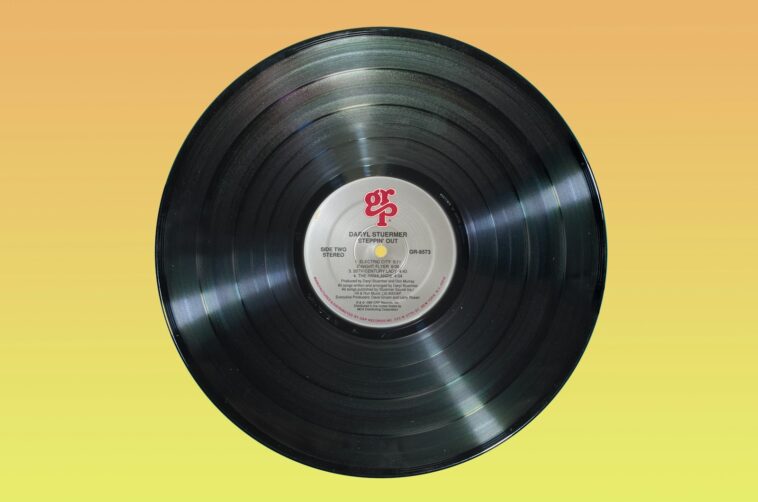Creating custom t-shirts, tote bags, hoodies, and even pillow covers at home isn’t just fun—it’s easier than a lot of people think.
Heat Transfer Vinyl (also called HTV) has become a go-to material for people who want to make their designs without needing fancy equipment or a huge budget.
I’ve been working with HTV for a while now, and I’ve helped a lot of friends and small business owners figure out how to use it properly.
And let me tell you, once you get the hang of it, it can completely change the way you approach DIY projects, gifts, or even your own brand.
So in this guide, I’m going to walk you through how to use heat transfer vinyl step-by-step. I’ll cover what tools you need, how to prep your design, how to apply it, and how to make sure it lasts through washing and wear.
What is Heat Transfer Vinyl?
Heat Transfer Vinyl (HTV) is a type of vinyl that’s used to create designs on fabric. You cut out your design, weed out the parts you don’t need, and use heat (usually with a heat press or an iron) to stick it onto fabric.
HTV comes in a bunch of colors and finishes—matte, glossy, glitter, metallic, even glow-in-the-dark. It sticks to cotton, polyester, poly-cotton blends, and some other types of fabric. Just make sure you check the label of your material to see if it’s heat-safe.
What You Need to Get Started
You don’t need to spend a lot to get started with HTV. Here’s a basic list of what you’ll need:
Heat Transfer Vinyl (HTV) – Choose a brand like Siser EasyWeed or Cricut Everyday Iron-On.
Cutting Machine – Something like a Cricut or Silhouette. You can cut by hand, but a machine gives better results.
Weeding Tool – A pointy tool that helps you pull off the vinyl pieces you don’t need.
Heat Source – A heat press works best, but a regular iron can do the job if you’re careful.
Blank item – T-shirts, tote bags, hoodies, hats—whatever you want to customize.
Parchment paper or Teflon sheet – This protects your vinyl during pressing.
How Do I Use Heat Transfer Vinyl?
1. Choose and Create Your Design
Start by creating your design using design software like Cricut Design Space or Silhouette Studio. You can also use free tools like Canva or Inkscape if you’re exporting your designs.
Important: Make sure to mirror (flip) your design before cutting. HTV is applied upside down, so if you don’t flip it, your design will end up backward on the fabric.
2. Cut the Vinyl
Load the HTV into your cutting machine with the shiny side down. That shiny side is the clear carrier sheet that holds the vinyl in place.
Choose the right cut settings based on the vinyl brand. Most vinyl companies list the correct settings on their websites. For example, Siser’s settings are super helpful and updated regularly.
3. Weed the Vinyl
After cutting, peel away the parts of the vinyl you don’t need. This step is called weeding. You’ll remove the negative space so only your design is left on the clear sheet.
It’s easier to weed small or detailed designs if you use a weeding tool or tweezers. Take your time—this part can be relaxing, honestly.
4. Prep the Fabric
Before applying the vinyl, wash your fabric item if it’s brand new. Pre-washing helps get rid of any chemicals or coatings that might stop the vinyl from sticking well.
Also, press or iron the fabric for a few seconds to remove wrinkles and moisture.
5. Apply the Vinyl
Place your weeded vinyl design on your fabric with the clear sheet facing up. Cover it with parchment paper or a Teflon sheet to protect it.
Now it’s time to press:
With a heat press: Use the settings recommended by your vinyl brand (usually around 305°F for 10–15 seconds).
With an iron: Set your iron to “Cotton” or the hottest setting with no steam. Press firmly over each area for about 15–20 seconds. Keep pressure even. Don’t slide the iron around.
Let it cool for a few seconds (unless your vinyl says to peel hot), then peel off the clear backing.
6. Check and Repress If Needed
If any parts of the design start lifting, cover it again and press for a few more seconds. Some thicker or layered designs may need extra heat.
How To Make Sure HTV Designs Last
The last thing you want is your design peeling off after one wash. Here’s how to make it last:
Wait 24 hours before washing your item.
Wash inside out in cold water.
Skip the dryer or tumble dry on low heat.
Don’t use bleach or fabric softener.
HTV designs can last 50+ washes if applied and cared for correctly. That’s pretty impressive for a DIY project.
Common Problems and How To Fix Them
Vinyl isn’t sticking?
You might not be using enough heat or pressure. Try pressing longer or adjusting your temperature settings.
Design is peeling after a few washes?
This usually happens from washing too soon or using high heat in the dryer. Let it cure for 24 hours and wash in cold water.
Bubbles or wrinkles?
You may have moved the iron or heat press while pressing. Make sure to keep it steady and use even pressure.
Where To Buy Heat Transfer Vinyl
Some of my go-to places to buy HTV:
Expressions Vinyl – Great variety and sales.
Heat Transfer Warehouse – Tons of brands and supplies.
Amazon – Convenient, but make sure you check reviews.
FAQs
Can I use an iron instead of a heat press?
Yes, an iron works just fine for simple projects. Just make sure to apply firm, even pressure and no steam.
What kind of fabrics can I use?
HTV works best on cotton, polyester, and blends. Avoid heat-sensitive materials like nylon unless you’re using specialty HTV.
Can I layer HTV colors?
Absolutely, but you’ll want to use standard HTV for the base and not pile up too many layers. Use heat-safe tape to help position things perfectly.
Do I need to mirror every design?
Only designs that are applied face-down need to be mirrored. Print-and-cut or HTV that’s applied face-up doesn’t.
What’s the best HTV brand for beginners?
I always recommend Siser EasyWeed. It cuts easily, weeds well, and sticks reliably.
Wrapping Up
Heat Transfer Vinyl makes it easy to create professional-looking custom designs at home. Once you get the hang of it, the possibilities are endless—custom gifts, branded merch, matching family shirts, even starting a side hustle.
So now that you know how to use heat transfer vinyl…
What’s the first thing you’re excited to make?





GIPHY App Key not set. Please check settings